Stress in dogs can arise in different situations and there are different types. Stress can be divided into positive excitement and negative excitement. Positive excitement occurs, for example, when you take the leash and the dog is allowed to go outside. There is slight stress, but this will hardly lead to any problems. This shape can often be recognized by the wagging tail that moves up and down smoothly and broadly.
Negative excitement can occur, for example, when the dog encounters a 'scary' fellow. In these situations, stress is caused by fear or insecurity, which often manifests itself in aggressive behavior. It can also be recognized by a wagging tail that moves up and down tight and narrow.
Stress does not always have to be negative, but positive stress is also a burden for the dog. When the stress is short-lived, it can do little harm. However, when the stress returns often or lasts for a long time, it can have risks for the dog's health.
What Causes Stress in Dogs?
Stress can have different causes. People often put the dog in a stressful situation, for example due to noise or traffic. However, one dog suffers more from this than the other. This has to do, among other things, with genetic predisposition and experiences that the dog has gained.
One of the main causes of stress is how people interact with their dogs. People often have their dog's best interests at heart, but subconsciously have no idea that they are causing stress to their dog. This is mainly because humans give the dog few choices, humans direct the dog's life and that causes stress. When you learn to read the dog's signals, stress can be prevented in many situations.
The most common causes of stress in dogs are:
-
Fear of abandonment
-
Pain
-
Insecurity
-
Fear of other dogs
-
Sudden changes such as moving
-
Visit to the vet
-
Fireworks
-
Traveling in the car
What are the symptoms of stress?
There are several behaviors and signals a dog can display when it is under stress. These behaviors and signals can be divided into five groups:
-
Ambivalent behavior: The dog will perform two behaviors at the same time or in close succession, but these behaviors contradict each other. So the dog cannot choose which behavior to perform.
-
Redirected behavior: The response is directed at something or someone other than that which causes the behavior.
-
Jump over behavior: This behavior seems to come out of nowhere and has nothing to do with the situation. This behavior often arises when the dog doesn't know what to do or can't choose between two behaviors.
-
Intention movement: This shows that the dog wants to make a movement because it is planning something, but something stops it and the movement is stopped.
-
Autonomic Response: This is the body's response to a stressful situation.
When you pay attention to these behaviors, you can estimate when the dog is not feeling well. When this occurs more often in certain situations, you can choose to avoid these situations to control the situation. Some signs of stress are:
-
Mouth licking
-
High bark
-
Bite the belt
-
Licking herself
-
Jump forward and back again
-
Vibrate
-
Panting
With these signals it is important that you continue to pay attention to the situation. In certain situations, some behaviors are quite normal, while in other situations it can indicate stress. It is important that you know his or her own dog well.
How is stress diagnosed?
The diagnosis of stress is based on the symptoms.
How is stress treated?
Also in this situation, prevention is better than cure. However, if the dog still suffers from stress, you can choose to reduce the stress with an anti-stress agent. These anti-stress products are available in the form of tablets, collars and paste. You can also choose to give medicines that have been prepared in a homeopathic manner, for example Puur Natuur Rust.
How can stress be prevented?
It is important to have regularity in the dog's life. In addition, it is important to have enough activities for the dog where it can lose its energy. A walk is not enough for many dogs. For example, you can play search games with the dog, hide some chunks or snacks in the house or a toy. An ideal toy with which you can do this is the Kong, there are various recipes that can be used to fill the Kong.
In addition, it is important that the dog learns to deal with difficult situations. This can be done through habituation therapy. It is important that the help of a dog behavior therapist is called in to help. This is necessary because not only the dog has to change its behavior, but also the owner has to change its behavior. As an owner, you can make a big difference in reducing stress in your dog.
This text was translated by a translation machine
 Horse Pharmacy
Horse Pharmacy Rugs
Rugs Care
Care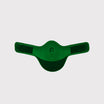 Saddle and Attachments
Saddle and Attachments Leg Protection
Leg Protection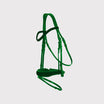 Bridles
Bridles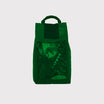 Feed
Feed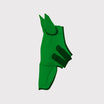 Fly Masks
Fly Masks Saddle Pads
Saddle Pads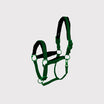 Headcollars and Ropes
Headcollars and Ropes Bits
Bits Other Disciplines
Other Disciplines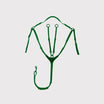 Reins and Auxiliary Reins
Reins and Auxiliary Reins Clipping
Clipping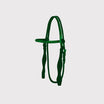 Western
Western Eventing
Eventing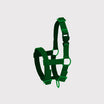 Foals
Foals Reflection
Reflection Therapy Products
Therapy Products Boots and Shoes
Boots and Shoes Breeches and Belts
Breeches and Belts Tops
Tops Safety
Safety Competition
Competition Heated Clothing
Heated Clothing Gloves
Gloves Socks
Socks Spurs and Attachments
Spurs and Attachments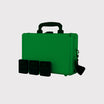 Technology
Technology Whips
Whips Gifts
Gifts Casual Wear
Casual Wear Underwear
Underwear Rider Pharmacy
Rider Pharmacy Bags
Bags Books
Books Laundry supplies
Laundry supplies Jewelry
Jewelry Feed and Waterbowls
Feed and Waterbowls Equipment
Equipment Tack Room
Tack Room Pest Control
Pest Control Arena
Arena Horse Toys
Horse Toys Wheelbarrows
Wheelbarrows Yard
Yard Surveillance
Surveillance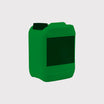 Disinfect
Disinfect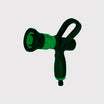 Washing Area
Washing Area Lighting
Lighting Horse Pasture
Horse Pasture Current Conductors
Current Conductors Pole
Pole Insulators
Insulators Energisers
Energisers Gate Handles
Gate Handles Batteries and Accumulator
Batteries and Accumulator Nets
Nets Grounding
Grounding Tools
Tools Fencing Security
Fencing Security Wolf Defense
Wolf Defense Fencing Sets
Fencing Sets Fence locks
Fence locks Dogs
Dogs Cats
Cats Rodents
Rodents Dogs Pharmacy
Dogs Pharmacy Cats Pharmacy
Cats Pharmacy Rodents Pharmacy
Rodents Pharmacy Cattle Pharmacy
Cattle Pharmacy Poultry Pharmacy
Poultry Pharmacy Veterinary Supplies
Veterinary Supplies Cattle
Cattle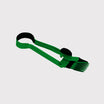 Sheep and Goats
Sheep and Goats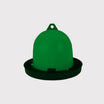 Poultry
Poultry Heat Lamps
Heat Lamps Calves
Calves Marking
Marking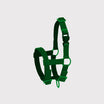 Halters
Halters